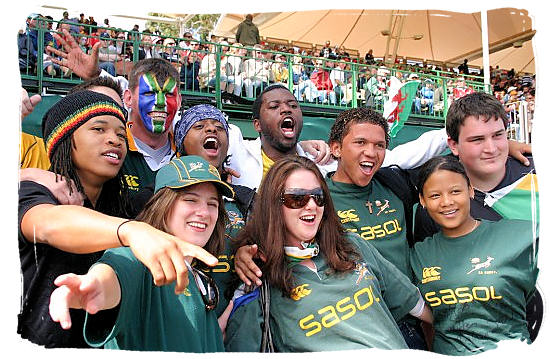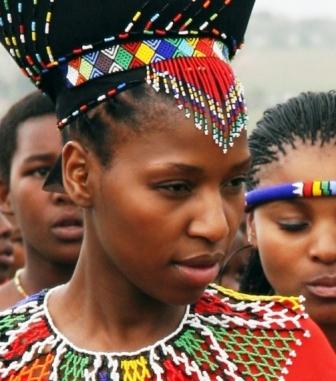The Buzz on South African Culture Today
Table of ContentsThe 3-Minute Rule for South African Culture Today3 Simple Techniques For South African Culture TodayGet This Report on South African Culture TodayThe smart Trick of South African Culture Today That Nobody is Talking AboutThe South African Culture Today DiariesSouth African Culture Today for Dummies
This follows with vocal singing and drum beating. The couple then meet with the seniors and speak about the relevance of their union. An issue of relevance in Zambian towns is the passing away of liked ones. All members of the village put money, time and effort together for the burial of the deceased.Music and dancing is a very essential element of the Zambian society. The numerous tribal devices have their very own dancing forms; however, makishi is common among all people.
Rumored Buzz on South African Culture Today
When it involves songs, drums are utilized one of the most, with a selection of drumming events. In Zambia, bulk of individuals are Christian; Protestant and Roman Catholic. There are little groups of Muslims and Hindus, with the remainder following local indigenous tribal beliefs.

South African heritage and culture is exceptionally diverse, and contains several teams of people that each have their own customs and ideas. Having such a diversity of people and societies is what makes South Africa so special. In truth sense of the phrase, we are a rainbow country.
South Africa has around 3 hundred thousand Portuguese people living in it. Making it the 7th on the checklist of countries with the most Portuguese people in it outside of Portugal. Portuguese is not just a society, but it is also a language and a race. Portuguese individuals stem from the nation of Portugal in Europe, nonetheless, due to Portugal (like lots of other countries in Europe) discovering the globe and overcoming various other nations throughout the 15th 20th centuries, South Africa has what we call Portuguese South African's living in it.
The Ultimate Guide To South African Culture Today
Amongst the famous functions of the topography is a plateau that covers practically two thirds of the center of the country. The plateau complex rises towards the southeast, where it climaxes in the Drakensberg range, component of a cliff that divides the plateau from the seaside locations. The Drakensburg includes Champagne Castle, the greatest optimal in the country.
The region north of the Witwatersrand, called the bushveld, inclines downward from eastern to west towards the Limpopo River, which creates the global boundary. The western area of the plateau, the middleveld, also descends in the direction of the west and varies in altitude in between the highveld and bushveld. Between the Drakensburg and the eastern and southern coastline, the land descends to the sea.
Nearer the coastline there is a low-lying level called the eastern lowveld. Southwest of the plateau the nation becomes progressively a lot more arid, paving the way to the stony desert of the Great Karroo, surrounded on the eastern by the reduced, much better sprinkled plateau of the Little Karroo. Dividing the completely dry southern inside from the sandy littoral of the southern coastline and West Cape is one more variety, the Langeberg.
The Best Strategy To Use For South African Culture Today
The nation's racially, ethnically, and politically divided background has created national and subnational signs that still function as signs of the nation, and others signs that are approved just by particular groups. The monoliths to white settler occupation and political supremacy, such as the Afrikaner Voortrekker ("pioneer") Monolith in Pretoria and the Rhodes Monolith honoring the British colonial empire builder and find out Cape head of state Cecil Rhodes, continue to be sectarian icons.
The initial contemporary citizens were the San ("bushman") hunter-gatherers and the Khoi ("Hottentot") individuals, that herded animals (South African culture today). The San may have been present for thousands of years and left proof of their visibility in countless ancient cavern paints ("rock art"). Bantu-speaking clans that were the forefathers of the Nguni (today's amaZulu, amaXhosa, amaSwazi, and vaTsonga individuals) and Tswana-Sotho language teams (today's Batswana and Southern and Northern Basotho) moved down from eastern Africa as very early as the fifteenth century

The 2 former republics of the Orange Free State and Transvaal (South African Republic) were established by Afrikaner settlers who beat and dispossessed the Basotho and Batswana. Lesotho would have been by force incorporated right into the Orange Free State without the expansion of British protection in 1869. The ultimate unification of the country arised from the South African War (18991902) in between the British and the two Afrikaner republics, which lowered the country to spoil at the beginning of the twentieth century.
Afrikaners traditionally considered themselves the just real South Africans and, while providing full citizenship to all residents of European descent, denied that standing to individuals of shade till the autonomous shift of 1994. British South Africans maintain a sense of social and social link to Great Britain without deteriorating their identification as South Africans.
What Does South African Culture Today Mean?
The variety and fragmentation within ethnic groupings and the equilibrium of tensions in between those groups during the twentieth century protected against interethnic civil problem. While intergroup tensions over resources, entitlements, and political supremacy remain, those disputes are as likely to match Zulu against Zulu as Zulu against Xhosa or African versus Afrikaner.
From colonial India, British merchants and managers brought the curved steel decorative roofings and slender shoelace work columns that still exemplify the outdoor patios of cottages in the areas and cities throughout the nation. Holy places add an essential architectural aspect even in the smallest communities. Along with the skyrocketing steeples and explanation classic stonework of Afrikaans Dutch Reformed churches, Anglican churches, synagogues, mosques, and Hindu shrines offer range to the spiritual architectural scene.

Slaughtering and the brewing of typical grain click for more info beer are essential in securing the participation and goodwill of the ancestors who are thought about the guardians of excellent ton of money, prosperity, and well-being. Indian communities maintain their native culinary traditions and use them on Islamic and Hindu routine and ritualistic occasions. Afrikaners and Coloured people gather at weekend breaks and unique events at multifamily barbecues called braais, where community bonds are strengthened.
Because this was the primary financial venture of both black Africans and white homesteaders, problem in between those groups centered on the possession of grazing land and livestock. In 1867, the biggest ruby deposits worldwide were uncovered at Kimberley in the west main area. The riches from those areas helped fund the exploitation of the best gold coral reef worldwide, which was uncovered on the Witwatersrand in 1886.
The Definitive Guide for South African Culture Today
This brought about misunderstandings and purposeful misstatement in the transactions of white inhabitants and government authorities with African chiefs throughout the colonial duration (South African culture today). In the establishment of African books, some facets of public and chiefly "tribal trust fund" land tenure were protected, and also in white backwoods, types of public tenure were still practiced in locations with African communities
After the autonomous makeover of 1994, programs for land restitution, redistribution, and reform were instituted, however progress has actually been slow-moving. The white minority still manages eighty percent of the land. Following agricultural land invasions in Zimbabwe, the Division of Land Matters has actually promised to speed up land redistribution.